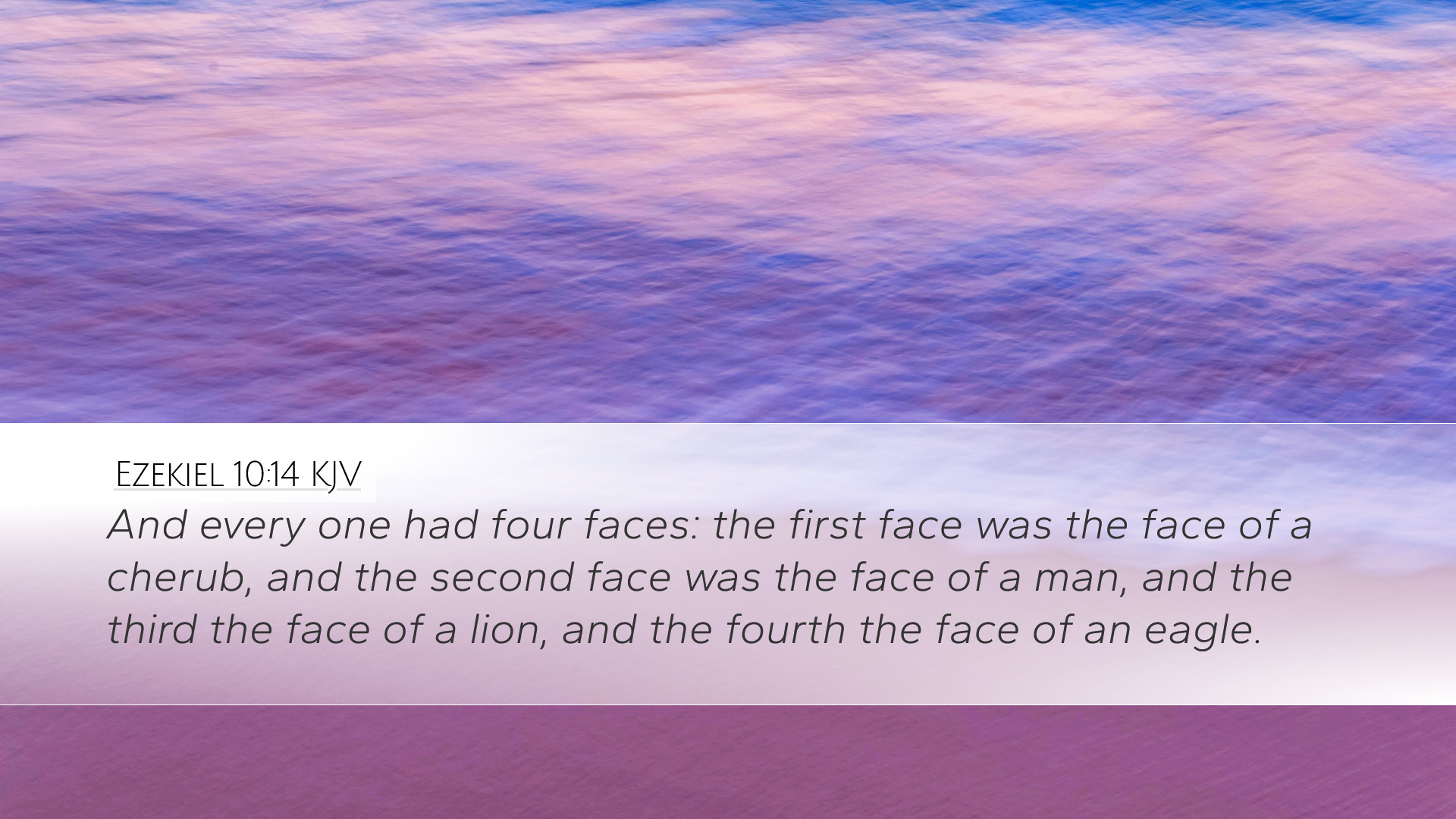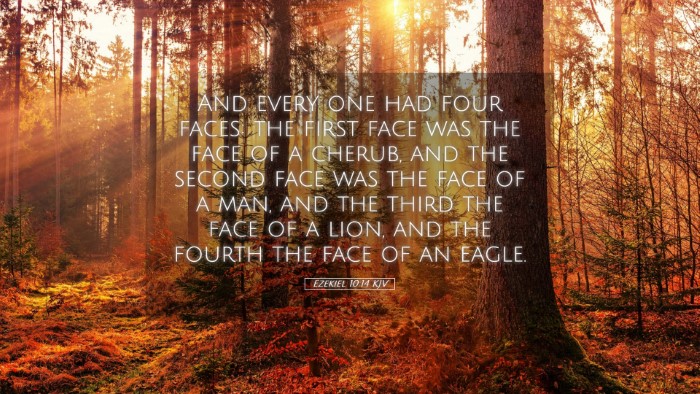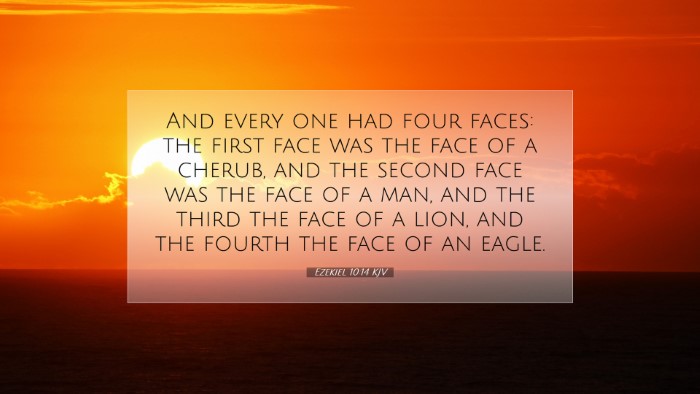Ezekiel 10:14 - Commentary and Insights
Bible Verse: Ezekiel 10:14 (KJV) - "And every one had four faces: the first face was the face of a cherub, and the second face was the face of a man, and the third the face of a lion, and the fourth the face of an eagle."
Introduction
The vision of the chariot and the glory of God described in the book of Ezekiel is one of the most profound and enigmatic portions of Scripture. Ezekiel 10:14 provides insight into the nature of the heavenly beings that serve in the presence of God, each possessing multiple faces. This verse not only showcases the grandeur of God's creation but also represents deeper theological truths about God's attributes and the role of divine beings in the fulfillment of His purposes.
Contextual Background
The book of Ezekiel was written during the Babylonian exile, a time when the people of Israel faced disillusionment and confusion about their identity and God's presence among them. Ezekiel, called as a prophet, communicates visions that emphasize God's sovereignty, holiness, and justice. The heavenly visions serve both as a warning and as a source of hope.
The Significance of the Faces
The four faces mentioned in Ezekiel 10:14—cherub, man, lion, and eagle—each carry rich symbolic meaning and reflect the multifaceted nature of God's creation and His attributes.
- Cherub: Often associated with the guardianship of the divine throne, the cherub suggests protection, holiness, and the ongoing presence of God. Matthew Henry notes that the cherubim have a direct relationship with God's glory, symbolizing His perfect governance.
- Man: The face of a man represents intelligence and reason, highlighting humanity's unique place in creation as beings made in the image of God. Adam Clarke emphasizes that the inclusion of the human face points to the relationship between God and humanity, depicting how God relates to us.
- Lion: The lion symbolizes strength, majesty, and authority. It portrays God's power and sovereignty over all creation. Albert Barnes points out that the lion's face indicates God's kingly nature and His rule over both heaven and earth.
- Eagle: The eagle, often seen as a symbol of swiftness and vision, signifies God's ability to transcend the ordinary and oversee creation with sharp precision. Clarke remarks on the eagle's association with majesty and the divine perspective on human affairs.
Theological Implications
This verse challenges readers to contemplate the depth of divine complexity. The different faces signify not only the attributes of God but also the diverse ways in which He interacts with humanity. Each of these aspects is crucial for understanding God's nature as it relates to His creation.
The Holiness of God
The presence of cherubim alongside the other faces underscores the holiness of God. The image serves as a stark reminder that God is not to be approached lightly. The cherubim guard the holiness of God, indicating that everything related to Him must be approached with reverence. Henry suggests that the very act of God's presence among men involves divine holiness that cannot be compromised.
Human Response
The diversity of faces implores humanity to recognize their potential for reflection of God's image. As beings created "in His image" (Genesis 1:26-27), humans are called to embody characteristics of intelligence (represented by the face of man), strength (lion), protection (cherub), and swiftness in action (eagle). The relational theology presented in this multi-faceted imagery is pivotal for understanding the covenant relationship between God and His people.
Divine Oversight and Interaction
From a pastoral perspective, this verse instills hope that God actively oversees the world and interacts with creation in multifaceted ways. His sovereignty is not merely a distant reign; instead, He is an involved deity who understands the complexities of life, symbolized through the various faces of the heavenly beings. Barnes offers reassurance that God's active participation can be trusted even amidst tribulations, as represented in Ezekiel's visions.
Conclusion
Ezekiel 10:14 serves as a profound reminder of the complexity and richness of God's being. Pastors, theologians, and students of the Bible are encouraged to delve deep into this radiant imagery. The multiple faces of the heavenly beings encourage the faithful to recognize various dimensions of God's character and to hold on to the assurance of His governing authority. As we meditate upon these truths, may we be inspired to reflect the glory of God in our lives and ministries.


